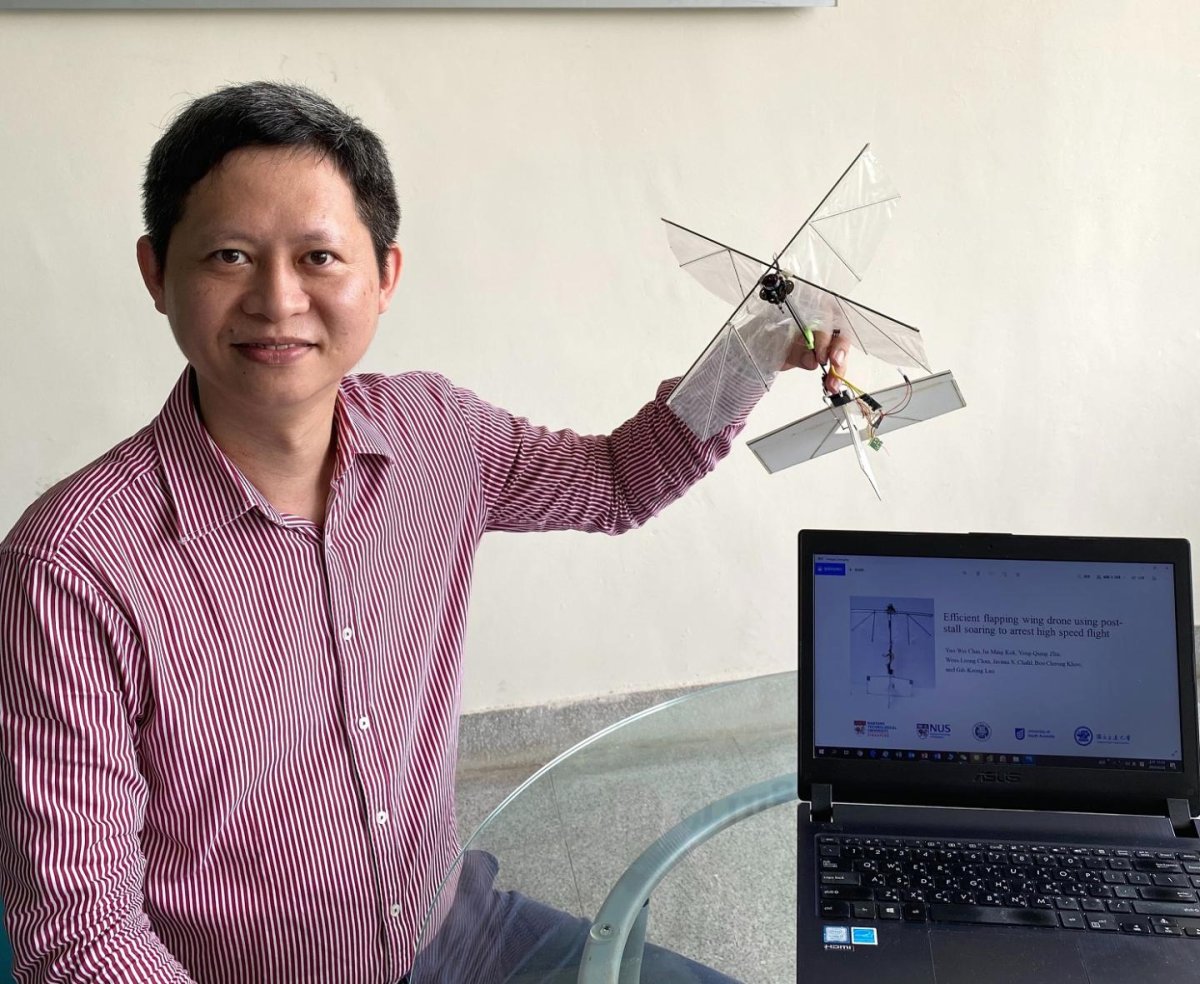The flying abilities of one of the world's fastest birds has been used as the inspiration to create a new drone prototype, scientists say.
Based on the aerobatic maneuvers of the swift, an international research team created a "flapping wing" aircraft—known as an ornithopter—that is able to hover, glide and dive in ways that outperform quadcopter-style drones that are in use today.
It has been designed to swoop into "cluttered" environments filled with humans and can quickly come to a stop from fast speeds to avoid collisions.
In the wrong hands, such tech could prove to be a privacy and security nightmare—but one team member assured Newsweek their motivations are pure, saying: "We are an international team who intend to keep out of the various tensions in the world."
The research, being spearheaded by National University of Singapore research scientist Dr. Yao-Wei Chin, has been published today in the journal Science Robotics.
"Unlike quadcopters that are... intrusive and not very agile, biologically-inspired drones could be used very successfully in a range of environments," Dr. Chin said.
These days, there are a variety of drone types available for both commercial and military uses. The researchers, spanning Singapore, Australia, China and Taiwan, have said their own prototype has unique capabilities that will make it stand out in the skies.
"It flies differently than a normal drone," University of South Australia (UniSA) aerospace engineer Professor Javaan Chahl told Newsweek.
"It can glide, hover, and still do some amazing aerobatics. It can save energy by flying in a large circle like a regular airplane, but can choose to hover when it needs to. It can land in hover, but could also soar efficiently up to a perch like a bird."
"Currently multirotor drones hover very nicely, but use even more energy in forward flight than in hover, so they can't really travel far," Prof. Chahl said.
"Fixed wing drones travel efficiently or quickly but hover is not normally possible without compromising the entire design. There are hybrid concepts, usually with wings and rotors achieving performance far worse for both range and hover. Flapping wings are nature's original solution to the need to fly fast and slowly and to land anywhere."
In a release detailing the project, Prof. Chahl was quoted as saying existing flap drones can fly forward, backward and glide but, until now, could not hover or climb.
"The triple roles of flapping wings for propulsion, lift and drag enable us to replicate the aggressive flight patterns of birds by simple tail control. Essentially, the ornithopter drone is a combination of a paraglider, airplane and helicopter," he added.
According to the researchers, there are no commercialized ornithopters being used for surveillance purposes today, but their little prototype could change that.
Despite the obvious advantages to having a super-agile bird-like drone, Prof. Chahl told Newsweek that, for now, the team is focused on more altruistic motivations.
He stated: "We are thinking of peaceful and constructive applications in infrastructure management, agriculture and the environment."
The team says the drone could help pollination efforts on farms without risking damage to crops or even be used to chase real birds away from airspace.
While military uses would be self-explanatory, the professor said: "Flapping wings have less potential to harm people, plants and property than a quad-rotor.
"Reduced noise and slower downwash of air will cause less disturbance. Pollination in greenhouses, where insects can be difficult to maintain was one idea. Any application monitoring the welfare of people, animals and environment seems interesting."
The team said the research showed copying real birds is a promising way to improve the capabilities of drones, but more work still has to be done on scalability.
"Although ornithopters are the closest to biological flight with their flapping wing propulsion, birds and insects have multiple sets of muscles which enable them to fly incredibly fast, fold their wings, twist, open feather slots and save energy," said Dr. Chin, adding: "At most, I would say we are replicating 10 percent of biological flight."
In correspondence with Newsweek prior to publication, Prof. Chahl explained the main motivations behind the project and how the technology could evolve in the future. The researcher's email responses have been lightly edited for length and clarity.
What motivated the research project?
"We are mostly motivated by the challenge. Ancient stories such as the fall of Icarus presumed bird flight was the solution, yet there are not really operational bird or insect drones out there. There are certainly many applications in surveillance, but the challenge is so absorbing that we really are not thinking about that while working on the science and technology. The outcome reported in Science Robotics is the culmination of Dr Yao-Wei Chin PhD and he has worked nearly full time on this for several years."
Were there any major surprises?
"For us the big surprise was when we realized that our mechanism was as effective and efficient as a propeller. Also the extreme flying possible with this little drone was quite surprising, and quite a handful for the pilot at first!"
Is it scalable, and is surveillance the priority?
"This has some distance to go before it can be a product, although we are thinking about that a lot at the moment. Achieving more durability and robustness is probably a key issue right now. It might seem odd, but conventional surveillance is not the first thing we are thinking about. We are an international team who intend to keep out of the various tensions in the world. We are thinking of peaceful and constructive applications in infrastructure management, agriculture and the environment."
What are the next steps?
"Our team's goal is for flapping wing drones to be able to fly nearly as far, and as long as fixed wing drones and hover as well and possibly longer than multi-rotor drones. We are looking to make the mechanisms more robust. There is a lot to do on the wing designs. We are also looking at individual control of each wing using something that behaves more like a muscle than the electric motor used in this study. We think that more closely examining what is happening in birds, and especially insects is the way forward."

Uncommon Knowledge
Newsweek is committed to challenging conventional wisdom and finding connections in the search for common ground.
Newsweek is committed to challenging conventional wisdom and finding connections in the search for common ground.
About the writer
Jason Murdock is a staff reporter for Newsweek.
Based in London, Murdock previously covered cybersecurity for the International Business Times UK ... Read more
To read how Newsweek uses AI as a newsroom tool, Click here.








